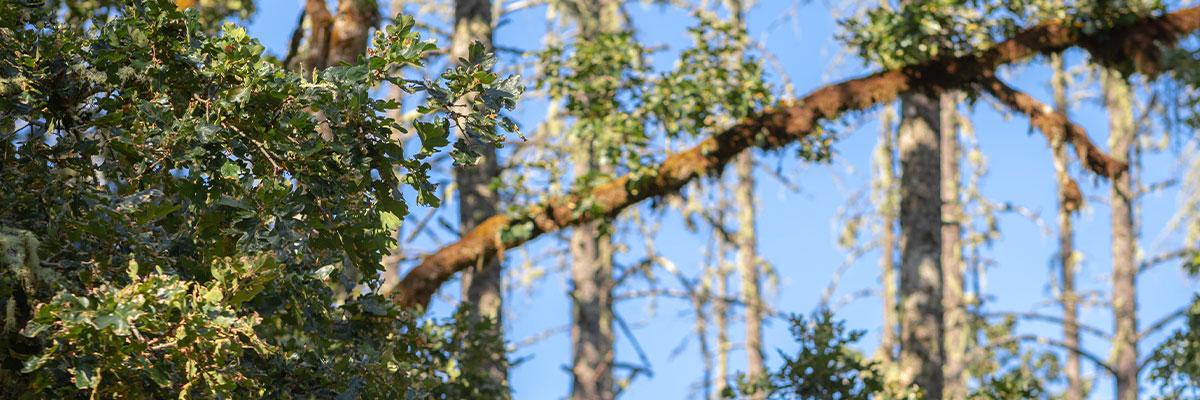Efficient Stump Grinding: Get Rid of Unsightly Stumps with Ease!
Are unsightly stumps ruining the aesthetics of your beautiful garden or backyard? Are you tired of tripping over those pesky remnants of once majestic trees? Well, fret not, because we've got the ultimate solution for you! In this article, we'll delve into the world of Efficient Stump Grinding: a magic wand for banishing those eyesores from your property!
But what exactly is stump grinding? How does it work? And why should you choose this method over other stump removal techniques? We're about to answer all these questions and more, so grab your gardening gloves and let's dive in!
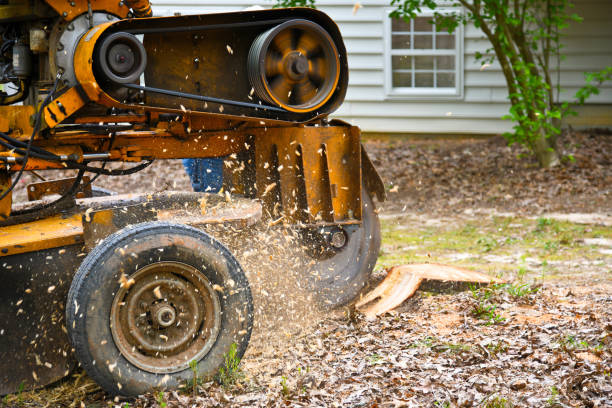
Unveiling the Mystery: What is Stump Grinding?
Stump grinding is like a superhero in the world of landscaping! It's the process of using specialized machinery to grind down tree stumps into small wood chips, effectively removing them from your property. Unlike traditional stump removal methods, which involve back-breaking labor and often leave a gaping hole in the ground, stump grinding ensures a clean and tidy finish!
How Does Stump Grinding Work?
Stump grinding machines, affectionately known as "stump grinders," have a rotating cutting wheel with sharp teeth. These tough teeth gnaw away at the stump, turning it into tiny wood shavings. The grinders can be large or compact, depending on the size of the stumps and the access to the area.
Why Choose Stump Grinding Over Other Methods?
You might wonder why stump grinding is the best choice for you. Let's explore the reasons that make it a cut above the rest:
Cost-Effective: Stump grinding is more budget-friendly compared to other techniques like excavation or chemical treatments. Plus, it's quicker, saving you both time and money!
Environmentally Friendly: Unlike chemical methods, which may harm the environment, stump grinding is eco-friendly. It leaves behind biodegradable wood chips that can be used as mulch or easily decompose.
Preserves Your Landscape: Stump grinding doesn't create large holes, ensuring your landscape remains intact. You won't have to worry about replanting or re-sodding areas disturbed by other removal methods.
Safety First: Leaving stumps in your yard can be hazardous. They're tripping hazards and can become homes for pests like termites. Stump grinding eradicates these risks, making your property safer for everyone.
Speedy Results: While other methods can take days or even weeks to complete, stump grinding can be finished within hours, giving you a stump-free yard in no time!
Get Ready for the Grind: Preparing for Stump Removal
Before you plunge headfirst into stump grinding, a little preparation can go a long way in ensuring a smooth process and a stunning outcome. Here's what you need to do:
Inspect the Stump: Assess the size, age, and condition of the stump. Larger, older stumps may require more grinding, while newer ones may be easier to tackle.
Clear the Area: Remove rocks, debris, and any other obstacles around the stump. Ensure there's enough space for the grinder to maneuver.
Trim the Stump: Cut the stump as close to the ground as possible. The shorter the stump, the less work for the grinder!
Protect Nearby Plants: If you have plants or flowers nearby, cover them to shield against flying wood chips during the grinding process.
Let the Grinding Begin: The Efficient Stump Grinding Process
Now comes the exciting part – the stump grinding itself! If you're hiring a professional, they'll handle the process for you. However, if you're a DIY enthusiast, here's a general outline of the steps involved:
Safety First: Don't forget to wear protective gear – safety goggles, ear defenders, and gloves are a must!
Position the Grinder: Place the grinder near the stump, ensuring the cutting wheel is aligned with the stump's edge.
Engage the Blade: Slowly lower the cutting wheel onto the stump and engage the blade. Let the grinder do its magic!
Circular Motions: Move the cutting wheel in circular motions to grind down the stump gradually. Be patient and let the grinder do the work for you.
Control the Depth: Adjust the cutting depth as needed to achieve the desired result. Remember, you want the stump to be as close to the ground as possible.
Clean-Up: Once the stump is reduced to wood chips, clear the area of debris and wood shavings.
FAQs: All Your Stump Grinding Questions Answered!
1. Is stump grinding safe for my lawn?
Absolutely! Stump grinding is safe for your lawn and garden. Unlike other removal methods that can damage the surrounding landscape, stump grinding leaves your lawn intact and ready for a fresh start.
2. Can I rent a stump grinder and do it myself?
Yes, you can! Many equipment rental stores offer stump grinders for rent. However, keep in mind that using a stump grinder requires some skill and caution. If you're unsure, it's best to leave it to the professionals.
3. How long does stump grinding take?
The duration of stump grinding depends on the size and number of stumps. On average, a single stump can be ground down in about 30 minutes to an hour. Larger stumps or multiple stumps may take longer.
4. Will the wood chips attract termites or pests?
No need to worry! While the wood chips left after stump grinding may attract pests, they will naturally decompose over time. However, to be extra cautious, you can remove the wood chips or use them as mulch away from your home's foundation.
5. Can I replant in the area where the stump was?
Definitely! That's one of the beauties of stump grinding. The area remains fertile and ready for planting once the grinding process is complete. No need to wait or worry about soil replacement!
Conclusion: Adieu, Unsightly Stumps!
Congratulations! You've made it through the world of Efficient Stump Grinding: the perfect solution to get rid of unsightly stumps and restore the charm of your outdoor space. Whether you choose to hire a professional or take on the challenge yourself, remember the key to a successful stump grinding experience lies in preparation, safety, and patience.
So, what are you waiting for? Embrace the power of stump grinding, bid farewell to those unsightly stumps, and embrace a landscape that's pristine and inviting! Efficient Stump Grinding: Get Rid of Unsightly Stumps and revel in the beauty of your rejuvenated outdoor haven! Happy grinding!
Top Arborist Tools: Must-Haves for Tree Care Professionals
As an arborist, your work involves the care and maintenance of trees, ensuring their health, safety, and aesthetics. To excel in this field, having the right tools is crucial. The right equipment can make a significant difference in your efficiency and the quality of your work. In this article, we'll explore the top arborist tools that are must-haves for tree care professionals. From climbing gear to pruning tools, we'll cover everything you need to know to equip yourself for a successful career in arboriculture.
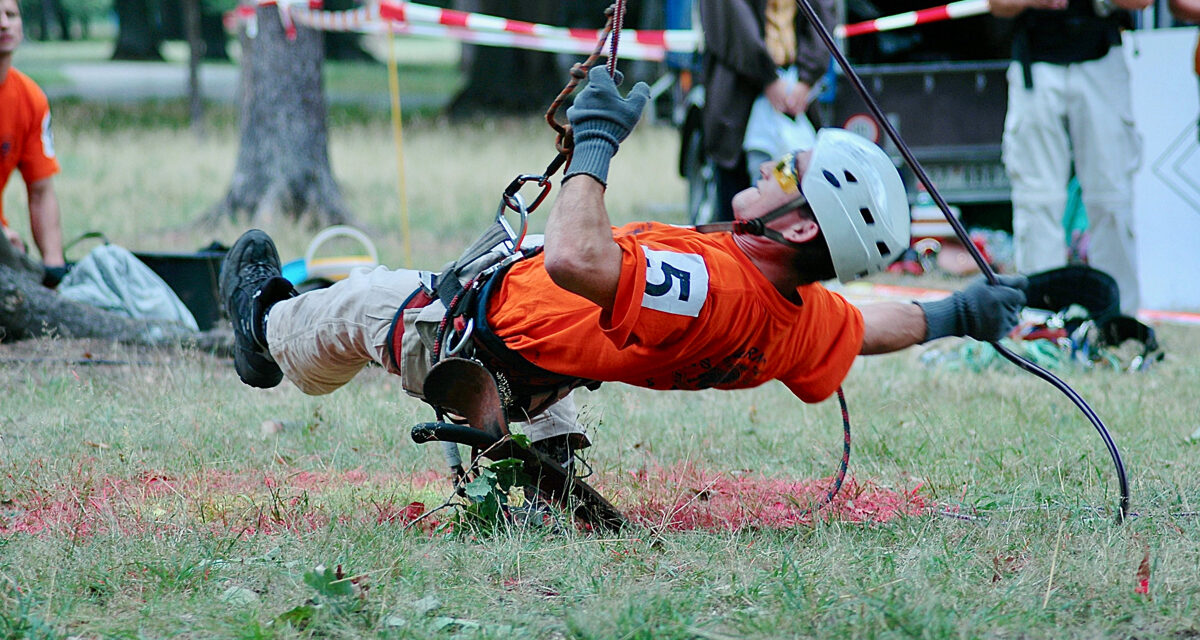
Introduction to Arborist Tools
Before we delve into the specific tools, let's understand the importance of using the right equipment in arboriculture. Just like a surgeon relies on precise instruments, an arborist needs specialized tools to perform tree care tasks effectively. Using the appropriate tools not only enhances productivity but also ensures the safety of the arborist and the trees they work on.
Climbing Gear for Arborists
Climbing is an integral part of an arborist's job, especially when pruning or removing trees. Proper climbing gear is essential to ensure safety and stability while working at heights.
Climbing Harness
The climbing harness is the foundation of an arborist's climbing gear. It provides support and distributes the body's weight during tree ascents and descents.Carabiners and Ascenders
Carabiners and ascenders are used to attach the climbing rope to the harness and facilitate smooth ascents and descents.
Climbing Spurs (Spikes)
Climbing spurs, also known as spikes, are essential for ascending trees with rough bark. However, they should be used selectively to avoid damaging the tree's cambium layer.
Cutting and Pruning Tools
Pruning is a common task in arboriculture, and having the right cutting tools is crucial for precise and clean cuts.Hand Pruners
Hand pruners, also known as secateurs, are ideal for trimming small branches and twigs. They come in various sizes and types, such as bypass and anvil pruners.
Loppers
Loppers are used for cutting larger branches that are out of reach for hand pruners. They provide more leverage and cutting power.
Pruning Saws
Pruning saws are essential for removing larger branches. They come in different blade lengths and tooth patterns, suitable for various tree sizes.
Chainsaws
Chainsaws are indispensable for arborists when dealing with tree removals and larger pruning tasks. Proper training and safety measures are essential when using chainsaws.
Tree Inspection Tools
As an arborist, you need to assess the health and structural integrity of trees. Tree inspection tools help in evaluating potential risks and planning appropriate care.
Resistograph
A resistograph is a drilling device used to measure tree trunk density and detect internal decay or cavities.
Increment Borer
An increment borer is used to extract a small core from a tree trunk, allowing arborists to examine growth rings and assess tree age and health.
Arborist's Tape Measure
An arborist's tape measure is used to gauge the height and diameter of trees, crucial information for assessment and record-keeping.
Tree Shovels
Tree shovels come in handy during root collar examinations and transplanting young trees.
Safety Equipment for Arborists
Safety should always be a top priority for arborists, and the right safety equipment can prevent accidents and injuries.Personal Protective Equipment (PPE)
Personal Protective Equipment, including helmets, gloves, eye protection, and sturdy footwear, safeguards arborists from falling debris and other hazards.
First Aid Kit
A well-equipped first aid kit is essential on every job site to handle minor injuries and provide immediate care in case of accidents.
Safety Harness and Lanyard
Safety harnesses and lanyards are crucial for securing arborists while working at heights, preventing falls.
Helmet-Mounted Hearing Protection
Arborists often work in noisy environments, and helmet-mounted hearing protection helps protect their hearing.
Conclusion
Having the right tools is the cornerstone of success for tree care professionals. Proper climbing gear, cutting and pruning tools, tree inspection equipment, and safety gear are all essential for arborists to perform their jobs effectively and safely.
FAQs
Q1: Are climbing spurs necessary for every tree climb?
Climbing spurs should only be used when necessary, as they can cause damage to the tree's cambium layer. They are typically used for tree removals or when ascending trees with rough bark.
Q2: Can I use a chainsaw for pruning tasks?
Chainsaws are suitable for larger pruning tasks but should be used with caution and proper training to avoid accidents and damage to the tree.
Q3: How often should I inspect my climbing gear?
Climbing gear should be inspected before each use and regularly checked for signs of wear and tear.
Q4: What is the purpose of an increment borer?
An increment borer is used to extract a small core from a tree trunk, providing valuable information about the tree's age and health.
Q5: Is it necessary to wear PPE even for small pruning jobs?
Yes, wearing Personal Protective Equipment (PPE) is crucial for any arboriculture task, no matter how small, to protect against potential hazards.
Understanding Tree Health: Signs of a Happy or Sick Tree
Hello, tree lovers! Trees are not just silent observers of our surroundings; they play a vital role in maintaining ecological balance and adding beauty to our environment. Just like us, trees can experience ups and downs in their well-being. In this article, we will explore the various signs that indicate whether a tree is happy and thriving or in need of some tender loving care.
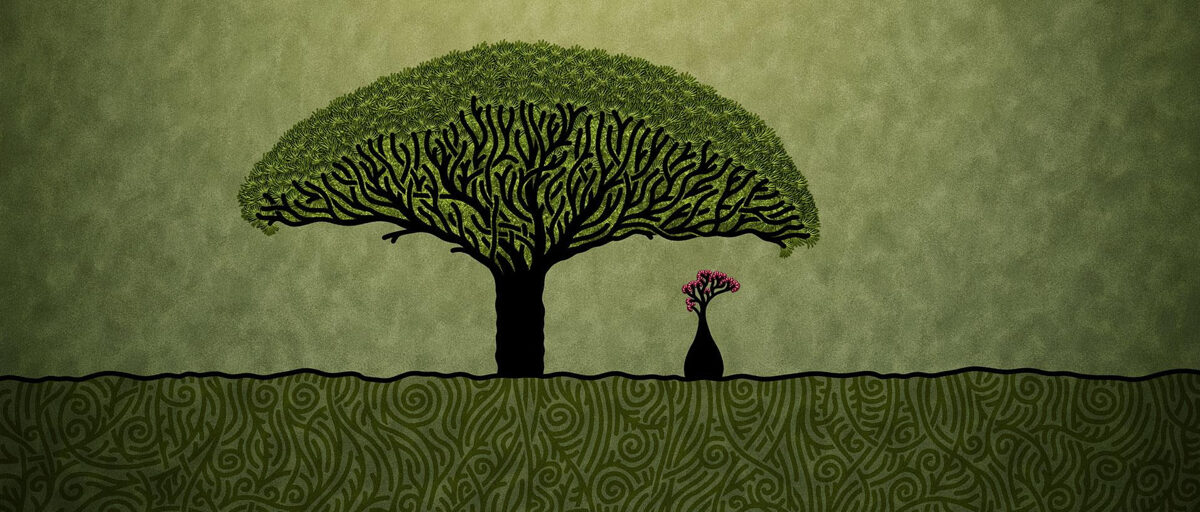
The Importance of Tree Health
Before we delve into the signs of a happy or sick tree, let's take a moment to understand why tree health is crucial. Trees provide numerous benefits to the environment and human society. They improve air quality by absorbing carbon dioxide and releasing oxygen through photosynthesis. Trees also act as natural air purifiers, filtering out pollutants and particulate matter from the atmosphere. Additionally, they offer shade and reduce the urban heat island effect, providing a cooler and more pleasant environment for us to enjoy.
The Role of Leaves in Gauging Tree Health
Leaves are like a tree's health barometer. They are crucial indicators of a tree's overall well-being. Let's explore how to interpret their condition.
Understanding Healthy Leaves
Healthy leaves are vibrant, uniformly green, and free from spots or discoloration. They are vital for photosynthesis, the process by which trees convert sunlight into energy. Healthy leaves ensure that the tree receives the nutrients it needs to grow and thrive.
Identifying Unhealthy Leaves
On the other hand, unhealthy leaves exhibit various signs of distress. Yellowing leaves may indicate nutrient deficiencies, while wilting leaves could be a sign of insufficient water supply or root problems. Spotted or discolored leaves may point to pest infestations or diseases affecting the tree.
It's essential to pay attention to the leaves' condition throughout the year, as changes in their appearance can signal potential issues that require attention.
Bark: A Window into Tree Well-Being
A tree's bark provides valuable clues about its health status. Let's decipher the messages hidden in the bark.
Characteristics of Healthy Bark
Healthy bark appears smooth, intact, and free from cracks or wounds. Different tree species have unique bark textures and colors, but they should generally look vibrant and healthy.
Signs of Bark Troubles
Damaged or peeling bark can expose a tree to infections and pests. Fungal infections, such as cankers, can cause the bark to crack or ooze sap. Insect infestations can also leave visible marks on the bark surface.
Examining the bark can help identify potential issues and prompt appropriate actions to ensure the tree's well-being.
Roots: The Foundation of Tree Health
A healthy root system is vital for a tree's survival and prosperity. Let's dig into the world of tree roots.
Healthy Root Systems
A robust and well-established root system ensures efficient water and nutrient uptake from the soil. Strong roots anchor the tree securely and provide stability against wind and other environmental forces.
Unearthing Root Problems
Girdling roots, root rot, or compacted soil can jeopardize a tree's health. Recognizing these signs is crucial for effective treatment and prevention of further damage.
Tree roots are often hidden below the ground, but understanding root issues is essential for maintaining a tree's health and longevity.
Assessing Tree Health through Growth and Form
A tree's growth pattern and overall form can also provide valuable insights into its health. Let's explore what healthy and unhealthy growth looks like.
Vigorous Growth and Proper Form
Healthy trees exhibit vigorous growth, with branches spreading evenly and a well-defined central leader (the main trunk). They maintain a balanced canopy and exhibit symmetrical branching patterns.
Proper form ensures that a tree has a stable structure and can withstand environmental stressors, such as wind or heavy snow.
Stunted Growth and Deformed Structure
Unhealthy trees may show signs of stunted growth, with small or sparse leaves and poor branch development. A tree with an unbalanced or irregular canopy may indicate structural issues that need attention.
Identifying growth abnormalities can help address underlying health problems and promote a tree's recovery.
The Impact of Pests and Diseases
Pests and diseases can take a toll on tree health, compromising their ability to thrive. Let's explore some common tree pests and diseases and their indications.
Common Tree Pests
Insects like aphids, caterpillars, and beetles can cause damage to leaves, branches, or bark. Signs of infestations include chewed leaves, holes, or visible pests on the tree's surface.
Tree Diseases and Their Indications
Fungal infections, bacterial diseases, and viruses can attack trees and weaken their immune systems. Symptoms may include wilting, discoloration, or the presence of cankers or growths on branches or trunks.
Early detection and prompt treatment are essential to prevent the spread of pests and diseases and to protect the tree's health.
Environmental Stress and Tree Health
Environmental factors play a significant role in tree health. Let's explore how different stressors can impact trees and what to look out for.
Drought Stress
During periods of drought, trees may experience water stress, leading to wilting leaves and reduced growth. They may shed leaves prematurely to conserve water and energy.
Regular watering and mulching can help mitigate drought stress and support a tree's survival during dry periods.
Frost and Cold Stress
Exposure to freezing temperatures can damage a tree's tissues, leading to frost cracks or frost damage on leaves and buds. Frost-sensitive species may exhibit signs of winter injury.
Proper site selection and winter protection can help prevent cold stress and maintain tree health in colder climates.
Pollution Effects
Air pollution can negatively affect tree health, causing damage to leaves and bark. Trees near industrial areas or busy roads may exhibit signs of pollution stress.
Maintaining good air quality and providing adequate care can help trees withstand pollution and its harmful effects.
Providing Proper Tree Care
To ensure a tree's health and well-being, proper care and maintenance are essential. Let's explore some best practices for nurturing trees.
Watering and Soil Maintenance
Regular and consistent watering, especially during dry periods, is vital for a tree's health. Proper soil maintenance, such as mulching and aeration, can improve soil quality and water retention.
Mulching Benefits
Mulching around the base of a tree provides numerous benefits, including moisture retention, weed suppression, and temperature regulation. Mulch also adds essential nutrients to the soil as it decomposes.
Pruning for Health
Pruning is an essential tree care practice that promotes healthy growth and removes dead or diseased branches. Proper pruning techniques ensure that a tree maintains its natural form and structure.
When to Seek Professional Help
While we can do much to care for our trees, sometimes professional assistance is necessary. Let's explore when to call in the experts.
Certified Arborists: Your Tree's Best Friends
Certified arborists are trained professionals specializing in tree care. They can assess tree health, diagnose issues, and provide appropriate treatments to keep trees thriving.
Hiring the Right Tree Care Services
When seeking professional tree care services, it's essential to choose reputable and experienced professionals. Look for certifications, references, and customer reviews to make an informed decision.
Nurturing Young Trees
The early years are critical for a tree's long-term health. Let's explore how to nurture young trees to ensure their vitality.
Early Years: Critical for Lifelong Health
Young trees need extra care to establish strong root systems and develop healthy growth patterns. Proper watering, protection from pests, and regular monitoring are essential during this crucial phase.
Creating Optimal Growing Conditions
Choosing the right location and soil for planting young trees is crucial. Adequate sunlight, well-draining soil, and protection from harsh elements can set the foundation for a tree's long-term health.
Tree Removal: The Last Resort
In some cases, tree removal may be necessary. Let's explore when it becomes the last resort.
Deciding to Remove a Tree
Tree removal should only be considered when a tree poses a significant risk to people or property, has extensive irreversible damage, or is severely diseased and beyond recovery.
Professional Tree Removal Process
Tree removal should always be performed by trained professionals to ensure safety and prevent property damage. The process typically involves cutting the tree in sections and safely removing the debris.
The Benefits of Healthy Trees
Healthy trees offer numerous benefits to the environment and society. Let's explore some of these advantages.
Ecological Importance
Healthy trees contribute to biodiversity, provide habitat for wildlife, and help maintain ecosystem balance. They play a critical role in carbon sequestration and combating climate change.
Aesthetics and Property Value
Trees enhance the aesthetics of our surroundings, making neighborhoods and landscapes more attractive. Well-maintained trees can also increase property values and attract potential buyers.
Conclusion
Trees are incredible living beings that enrich our lives in countless ways. Understanding tree health is essential for preserving these valuable assets and ensuring their well-being. By observing leaves, bark, roots, growth patterns, and environmental stressors, we can diagnose potential issues and provide the proper care needed to keep our trees happy and thriving.
Remember, healthy trees are not just a sight to behold; they are integral to a sustainable and beautiful world.
Frequently Asked Questions (FAQs)
Can I use fertilizers to improve a tree's health?
Fertilizers can be beneficial when used appropriately. However, it's crucial to understand the specific nutritional needs of the tree and use fertilizers in moderation. Excessive fertilizer application can harm the tree and the environment. Consulting with a certified arborist can help determine the right fertilizer and application method for your tree.
How often should I water my trees during droughts?
The frequency of watering during droughts depends on various factors, such as tree species, soil type, and weather conditions. As a general rule, deep watering once every 7-10 days is often sufficient for mature trees. For newly planted trees, more frequent watering is necessary to help establish a strong root system.
What should I do if I suspect my tree has a disease?
If you suspect your tree has a disease, it's essential to seek professional help from a certified arborist. They can diagnose the issue and recommend the appropriate treatment. Early intervention can prevent the spread of the disease to other trees and increase the chances of successful treatment.
Is it possible to save a tree that has suffered extensive storm damage?
In some cases, trees with extensive storm damage can be saved with proper pruning and care. However, it depends on the severity of the damage and the tree's overall health. It's best to consult with a certified arborist to assess the tree's condition and determine the best course of action.
How do trees contribute to air quality improvement?
Trees help improve air quality by absorbing carbon dioxide (CO2) during photosynthesis. They release oxygen (O2) into the atmosphere as a byproduct, which is essential for all living organisms, including humans. Additionally, trees can capture and filter pollutants, such as nitrogen dioxide (NO2) and sulfur dioxide (SO2), helping to reduce air pollution and create a healthier environment.
Remember, maintaining tree health is a collective responsibility that benefits the environment and future generations. Let's cherish
Planting Trees Made Easy: Your Step-by-Step Guide
Planting trees is a noble and fulfilling endeavor! Not only does it bring us closer to nature, but it also contributes to a healthier environment. Trees are the lungs of the Earth, absorbing carbon dioxide and releasing precious oxygen. Whether you're an experienced gardener or a novice with a green thumb, this step-by-step guide will make planting trees a breeze!
Now, you might be thinking, "Why should I plant trees? Isn't it a hassle?" Not at all! With the right approach and some basic know-how, you can make tree planting a fun and rewarding experience. So, roll up your sleeves, grab your gardening gloves, and let's dive into the ultimate "Planting Trees Made Easy: Your Step-by-Step Guide"!

Selecting the Perfect Spot
Find Your Tree's Soul-Mate
Before you dive into planting, take a stroll around your garden or chosen location. Observe the sunlight, shade, and overall climate. Trees, just like people, have preferences! Some love soaking in the sun's warm rays, while others prefer a cool, shaded nook. Pick the right spot for your tree to thrive and flourish.
Give Some Space
Every tree loves its personal space! Make sure to check the mature size of your chosen tree species. You wouldn't want to plant a towering giant too close to your house, would you? Give your tree plenty of room to stretch its branches and grow majestically!
Check Underground
Wait! Before you dig that hole, make sure there are no underground utilities, like water pipes or electrical cables, lurking beneath the surface. Accidentally hitting one could lead to some nasty surprises! Use utility maps or consult with experts to avoid any mishaps.
Time to Get Dirty!
Gather Your Gear
Alright, it's planting time! Get yourself geared up with the essentials:
- Shovel: For digging a perfect hole!
- Compost: Nutrient-rich goodness for your tree!
- Mulch: To protect and nourish the roots.
- Watering can or hose: Trees need hydration too!
- Stakes and ties: Support for young saplings.
- Pruning shears: For a little trim and tidy.
Digging the Hole
Time to get your hands dirty! Start digging a hole that's twice the width of the root ball and just as deep. Don't rush; take your time to ensure a proper-sized hole. Remember, this will be your tree's new home, so let's make it comfy!
Inserting Your Tree
Carefully remove your tree from its container, gently shaking off any excess soil. Place it in the center of the hole, making sure the top of the root ball is level with the ground. Now, fill the hole with the soil you dug out. Pack it gently but firmly around the tree, ensuring there are no air pockets.
Adding Compost and Mulch
Ah, the secret to a happy tree! Spread a generous layer of compost around the base of your tree. This nutrient boost will give your young sapling a head start. Then, apply a layer of mulch to retain moisture and keep those pesky weeds at bay. Your tree will thank you for this cozy blanket!
Tender Loving Care
Give it a Good Soak
Just like you would enjoy a refreshing drink after a long day, your tree needs hydration too! Water your tree thoroughly after planting. Keep in mind, overwatering is just as harmful as underwatering. Strike a balance and find that sweet spot for your tree's watering needs.
Show Some Support
When you're young, you might need a helping hand. The same goes for young trees! Use stakes and ties to give your sapling the support it needs to stand tall and strong. As your tree grows, you can gradually remove the stakes, allowing it to spread its wings.
Prune with Care
Pruning is like giving your tree a stylish haircut! Remove any broken or dead branches to promote healthy growth. Remember, you're not giving it a crew cut; just a little trim here and there will do the trick!
FAQs (Frequently Asked Questions)
Q1: When is the best time to plant trees?
A1: The best time to plant trees is during their dormant period, typically in the fall or early spring. This allows the tree to establish its roots before the hot summer or freezing winter arrives.
Q2: Can I plant a tree close to my house?
A2: It depends on the mature size of the tree. Select trees that won't have invasive roots or branches that may damage your property. Leave ample space between the tree and your house to avoid future troubles.
Q3: How often should I water my newly planted tree?
A3: Newly planted trees need regular watering, especially during the first year. Water deeply but infrequently to encourage deep root growth. As the tree matures, it will require less frequent watering.
Q4: Do I need to fertilize my tree?
A4: In most cases, newly planted trees don't require fertilization during the first year. The compost and mulch you added should provide enough nutrients. After the first year, you can consider light fertilization if necessary.
Q5: How long does it take for a tree to grow?
A5: The growth rate varies depending on the tree species and environmental factors. Some trees grow quickly and reach maturity in a few years, while others may take decades to reach their full potential.
Conclusion
Congratulations! You've now become a tree planting expert! By following this step-by-step guide, you've learned how to select the perfect spot, dig a hole like a pro, and give your young sapling all the tender loving care it needs. Remember, planting trees isn't just about beautifying your surroundings; it's a vital contribution to the planet's health.
Now go forth and plant trees with confidence, knowing that you're making a positive impact on the environment. As your trees grow and flourish, they will be a testament to your care and dedication. So, embrace your green thumb, nurture those saplings, and watch as they transform into magnificent guardians of the Earth! Happy planting!
Explore Fascinating Tree Species: A Guide for Enthusiasts
Ah, trees! These majestic, green guardians of the earth have captivated human imagination for centuries. From the towering redwoods to the graceful willows, tree species have long been an essential part of our lives, providing us with shade, oxygen, and an unmatchable sense of serenity. So, join us on this fascinating journey as we explore the diverse world of tree species, uncovering their hidden wonders and uncovering the secrets of these magnificent living beings!
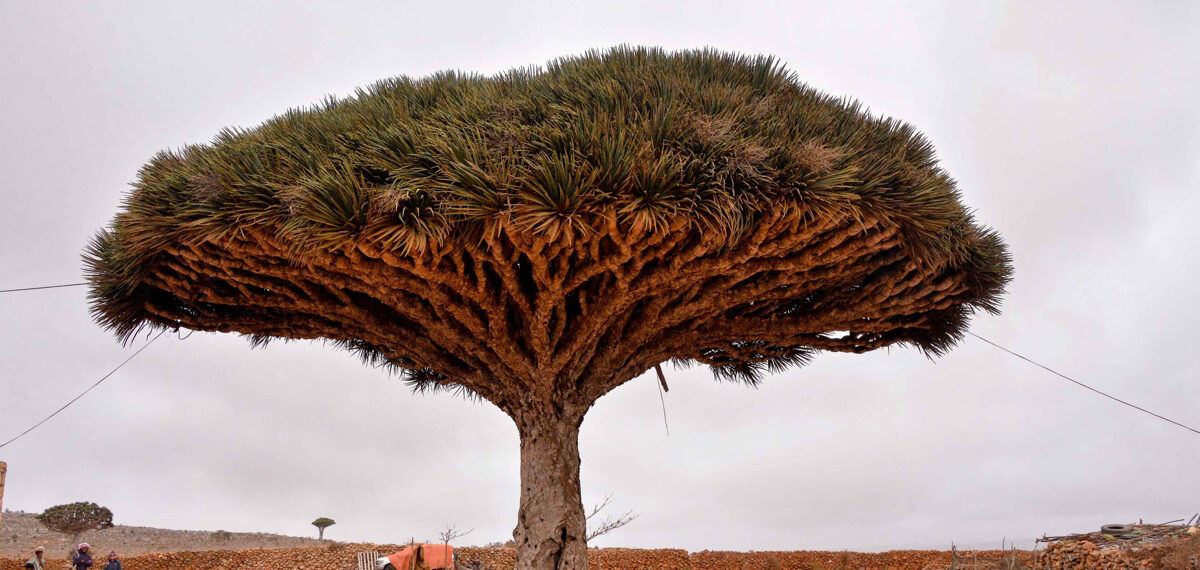
The Incredible Diversity of Tree Species
Let's dive straight into the heart of the matter - the incredible diversity of tree species! Just imagine, there are over 60,000 known species of trees worldwide! Each one of them brings something unique to the table, making the botanical world a magical place to explore. Here's a closer look at some of the most captivating tree species out there:
Baobab - The Timeless Titan
First on our list is the Baobab, often referred to as the "Tree of Life." And rightly so! This iconic tree species, with its stout trunk and branches that look like roots, is a symbol of strength and resilience. Found in the savannas and arid regions of Africa, these trees can live for thousands of years, standing tall witness to the passage of time!
Sakura - The Delicate Beauty
Ah, the Sakura tree species - an epitome of grace and beauty! Known as the Cherry Blossom tree, Sakura adorns Japan with its exquisite pink blooms during spring. These delicate flowers hold a special place in Japanese culture, representing the ephemeral nature of life. Witnessing a Sakura tree in full bloom is truly a sight to behold, and it reminds us of life's fleeting yet beautiful moments.
Banyan - The Architectural Wonder
Prepare to be amazed by the Banyan tree species, a true architectural wonder of the botanical world! Native to the Indian subcontinent, these trees develop aerial roots that grow downwards to form additional trunks. Over time, one single Banyan tree can spread over vast areas, creating breathtaking natural canopies and sanctuaries for various life forms.
Sequoia - The Towering Giants
When we talk about the Sequoia tree species, we are talking about giants - the tallest trees on our planet! These majestic conifers can be found in California, USA, and they reach staggering heights of over 300 feet! The Sequoia's impressive size and strength have earned them a spot as one of the Seven Natural Wonders of the World.
Tree Species FAQs
Why are trees so crucial for the environment?
- Trees play a vital role in absorbing carbon dioxide and releasing oxygen, maintaining a delicate balance of gases in the atmosphere.
- They provide habitat and food for numerous animal species, promoting biodiversity.
- Tree roots help prevent soil erosion and stabilize landscapes, preventing landslides and preserving fertile land.
Which tree species are endangered?
- The Brazilian Rosewood (Dalbergia nigra) is critically endangered due to overexploitation for its valuable timber.
- The Mountain Ash (Eucalyptus regnans) in Australia is facing threats from logging and habitat destruction.
- The Cedar of Lebanon (Cedrus libani) has significantly declined in numbers due to deforestation and climate change.
How do tree species adapt to different climates?
- Trees have evolved diverse strategies to adapt to various climates. For example, evergreen trees retain their leaves throughout the year, allowing them to photosynthesize even during winters.
- Desert-dwelling tree species have specialized mechanisms to store water and reduce water loss through transpiration.
What is the oldest living tree species?
- The Methuselah, a Great Basin Bristlecone Pine (Pinus longaeva), holds the title of the oldest known tree species, estimated to be around 4,800 years old!
The Vital Role of Tree Species
Now that we've marveled at the captivating beauty of tree species, let's take a moment to appreciate the indispensable role they play in our lives and the environment.
Oxygen Suppliers and Carbon Dioxide Sponges
Tree species are like the earth's very own lungs, inhaling carbon dioxide and exhaling life-giving oxygen. Through the process of photosynthesis, trees absorb CO2, a greenhouse gas responsible for global warming, and convert it into oxygen. This essential role helps in mitigating the effects of climate change and ensures a healthier planet for generations to come!
Biodiversity Hotspots
The vast variety of tree species provides a haven for countless animal species. Trees offer shelter, food, and nesting sites for birds, insects, and mammals alike. Many tree species act as key components of complex ecosystems, fostering biodiversity and contributing to the delicate balance of the natural world.
Soil Protectors and Erosion Preventers
The roots of tree species play a pivotal role in holding the soil together, preventing erosion caused by rainwater and wind. By securing the topsoil, tree roots preserve fertile land and contribute to the sustainability of ecosystems. In areas prone to landslides, tree roots act as natural anchors, preventing catastrophic soil movements.
Conclusion
As we conclude our enchanting journey through the world of tree species, one thing becomes abundantly clear - these green guardians are essential to the survival of life on our planet. From the towering Sequoias to the delicate Sakura blossoms, each tree species brings its own magic to the tableau of Mother Nature.
So, let us cherish and protect our green companions, appreciating their beauty, celebrating their diversity, and recognizing their vital contributions to the environment. In planting and preserving trees, we sow the seeds of a sustainable and greener future for generations yet to come!
Essential Tree Care Tips for Healthy, Thriving Trees
Welcome, fellow tree enthusiasts and guardians of nature's green giants! Whether you have a single majestic oak or a vibrant forest of diverse trees, knowing how to care for them is crucial to their well-being and longevity. Trees not only provide us with shade, clean air, and natural beauty but also contribute to the ecosystem's balance. In this comprehensive guide, we'll delve into the world of tree care, sharing valuable tips, common pitfalls, and expert advice to keep your leafy companions thriving!
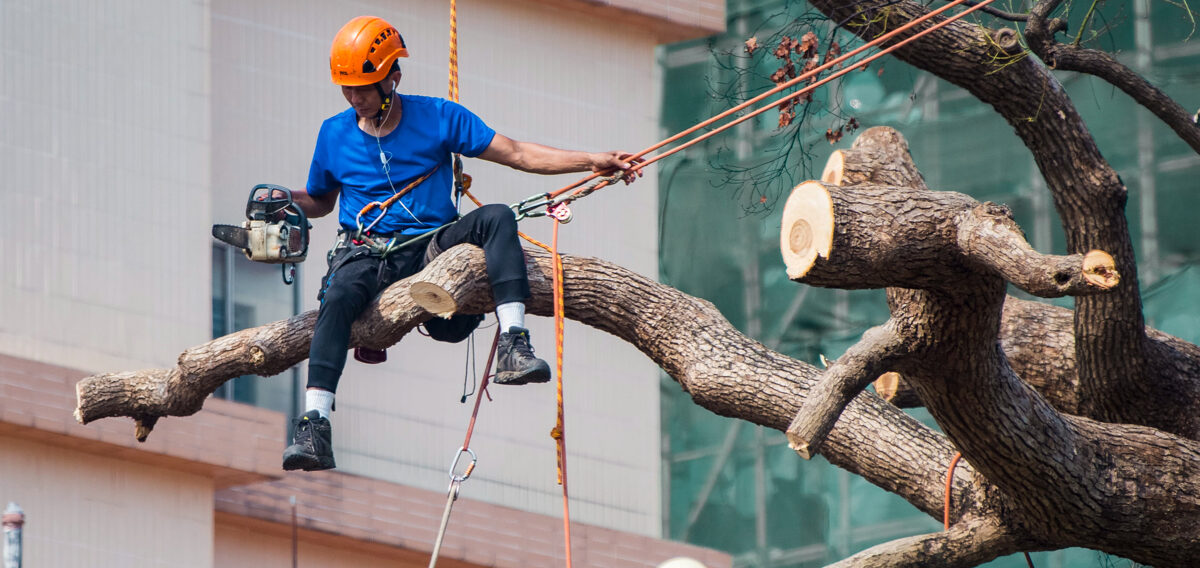
Why Tree Care Tips Matter!
Before we dive into the nitty-gritty of tree care, let's understand why it's essential to provide proper attention to our arboreal friends. Trees, like any living being, have specific needs to grow strong and healthy. By following the right practices, you can:
Enhance Growth: Proper care enables trees to grow taller, fuller, and more resilient, ensuring they remain a robust part of your landscape for generations!
Boost Aesthetics: Well-cared trees improve the overall aesthetics of your property, adding value and charm to your surroundings.
Environmental Benefits: Healthy trees contribute to air purification, reducing carbon dioxide levels and providing a habitat for diverse wildlife.
Prevent Disease and Pests: Regular maintenance and attentive care can prevent diseases and pests from causing irreversible damage.
Safety: Maintaining healthy trees reduces the risk of falling branches, ensuring the safety of your property and its occupants.
The Top Tree Care Tips!
Now, let's roll up our sleeves and get into the heart of tree care! Follow these tips to nurture your leafy companions and create an environment where they can thrive:
Water Wisely!
Proper watering is fundamental to a tree's survival and well-being. However, there's a delicate balance to strike:
Deep Watering: Instead of frequent shallow watering, give your trees a slow, deep soak. This encourages root growth and prevents surface roots that are prone to drying out.
Mulch Matters: Apply a layer of organic mulch around the base of the tree, but avoid piling it against the trunk. Mulch helps retain moisture, regulates soil temperature, and suppresses weeds.
Hydration Schedule: Young trees need more frequent watering, especially during hot weather. As trees mature, reduce the watering frequency but ensure they receive enough during droughts.
Pruning Prudence!
Pruning is an essential tree care practice that involves removing dead, diseased, or overgrown branches. Use these tips to prune your trees wisely:
Trim with Purpose: Avoid over-pruning, as it weakens the tree and can lead to stress. Focus on removing damaged or crossing branches to improve airflow and sunlight penetration.
Prune at the Right Time: Perform major pruning during the dormant season to minimize stress and maximize regrowth potential.
Leave it to the Pros: For large branches or trees close to power lines, consult a certified arborist to ensure safe and professional pruning.
The Soil Secret!
Soil quality directly affects a tree's health, so pay attention to its needs:
Soil Testing: Conduct periodic soil tests to determine its pH and nutrient levels. Adjust the soil accordingly to provide a well-balanced diet for your trees.
Aeration is Awesome: Compacted soil hinders root growth and nutrient absorption. Use a soil aerator to break up compacted soil and improve drainage.
Fertilize with Care: Don't overdo the fertilization! Use a slow-release, balanced fertilizer, and follow application guidelines to prevent nutrient imbalances.
Embrace Mulching Magic!
Mulching is a simple yet powerful practice for nurturing trees and soil health:
Mulch the Right Way: Apply mulch in a donut shape around the tree, leaving space near the trunk to avoid rot.
Choose Organic Mulch: Organic mulch, like wood chips or bark, decomposes over time, enriching the soil with nutrients.
Weed Control: Mulch helps suppress weed growth, which can compete with trees for nutrients and water.
Protect from Pests and Diseases!
Destructive pests and diseases can weaken or kill trees if left unchecked. Implement these precautions:
Inspect Regularly: Regularly inspect your trees for signs of pests, diseases, or damage. Early detection is vital for effective treatment.
Use Integrated Pest Management (IPM): IPM involves a combination of natural and chemical treatments, prioritizing eco-friendly solutions.
Maintain Tree Health: Healthy trees are more resistant to pests and diseases, so follow all the previous tips to ensure your trees' vitality.
FAQs – Your Tree Care Questions Answered!
Q: How often should I water my newly planted tree?
- A: For the first two years, water your young tree once a week during dry periods. Adjust the frequency based on weather conditions and soil moisture.
Q: Can I use any type of mulch for my trees?
- A: Organic mulch, such as wood chips, bark, or compost, is ideal for trees. Avoid using rocks or rubber mulch, as they don't provide the same benefits.
Q: Should I prune my trees during the growing season?
- A: It's best to prune during the dormant season to minimize stress and promote healthy regrowth.
Q: How can I tell if my tree is suffering from a disease?
- A: Look for signs like wilting leaves, unusual discoloration, and pest infestations. If you're unsure, consult an arborist for a professional diagnosis.
Q: Can I fertilize my trees more often to boost growth?
- A: Over-fertilization can harm trees, causing nutrient imbalances and root burn. Stick to a proper fertilization schedule to avoid such issues.
Conclusion
Congratulations! You are now armed with the knowledge and expertise to become a tree care guru! Remember, tree care is not a one-time task but an ongoing journey of nurturing and safeguarding our green giants. By following these tree care tips, you can ensure your trees remain healthy, happy, and a flourishing part of your landscape for years to come. So go forth and connect with nature while making a positive impact on the environment – one tree at a time! Happy tree caring! 🌳💚
How to Become a Certified Arborist: A Complete Career Roadmap
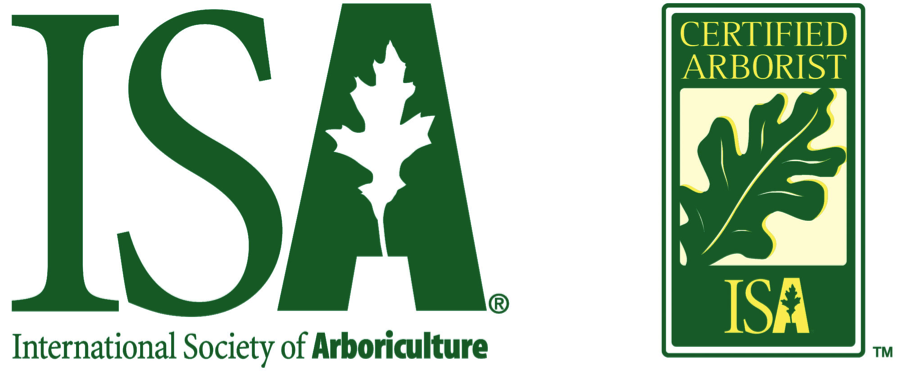
Becoming a certified arborist can be the ideal career for you if love trees, enjoy working outside and you are not afraid of heights. Experts in tree care in charge of planting, pruning, and removing trees as well as detecting and treating tree diseases and guaranteeing the safety of people and property around trees.
You must get education and training, after that certification from a reputable organization in order to become a certified arborist. All the information you want on how to become a certified arborist will be sent to you now.
What is an Arborist?
Arborists, sometimes called as tree surgeons or arboriculturists are experts in the upkeep of trees, shrubs, and other plants. Arborists are educated to identify and treat tree diseases and pests, trim trees, remove dead trees or dying branches and generally take care of trees. They perform their duties in public spaces, private homes.
Steps to Become a Certified Arborist
To become a certified arborist, there are several steps you need to follow:
1. Obtain a High School Diploma or GED
The first step to becoming a certified arborist is a high school diploma or GED. This is the minimum educational requirement for most arborist jobs.
2. Gain Experience in the Field
You will need work experience in the industry to become a certified arborist. Start working as a tree surgeon or landscaping is a good place to start. Start with basics and you will have the chance to learn the fundamentals of tree care.
3. Complete a Certification Program
There are several certification programs available for aspiring arborists. The most popular program is the International Society of Arboriculture (ISA) certification program. This program requires candidates to pass a written exam and demonstrate their practical skills in tree care and maintenance.
4. Gain Continuing Education Credits
You must get continuing education credits in order to keep your arborist certification current. This will guarantee that you keep abreast of the most recent methods and developments in tree care and upkeep.
Salary and Job Outlook for Arborists
Due of their particular knowledge and skills, arborists are in high demand. According to the Bureau of Labor Statistics medium annual income for arborists is $31,000. Seasoned arborists might make up to $65,000 year.
Conclusion
Aspiring arborists must be committed, diligent and passionate about the environment. You can become a certified arborist and have a fulfilling career in tree care and maintenance by following the instructions provided by us.We really hope that our in-depth guide "How to Become a Certified Arborist: A Comprehensive Career Pathway" will be beneficial to you.
Tree Removal: A Guide to Arborist Tree Removal Services
Trees are an essential part of our environment, providing shade, beauty, and a home for wildlife. However, sometimes, they become a liability, either due to age, disease, or damage. In such cases, tree removal becomes necessary. The process of removing a tree can be dangerous and requires the right tools and expertise. That's where arborist tree removal services come in. This article provides you with everything you need to know about arborist tree removal services.What is Arborist Tree Removal?
Tree removal by an arborist is the procedure of getting rid of trees that are dangerous to persons or property. This service is provided by qualified experts who have the right tools and gear to remove trees from a property securely. A safe and effective tree removal by an arborist is intended to accomplish this without endangering the neighborhood.
What to Expect from Arborist Tree Removal Services
When you use an arborist tree removal service, a group of skilled experts will visit your property to evaluate the problem. They will go over the procedure with you and address any questions you may have if the tree needs to be removed.
The crew will start the removal procedure after agreement. The tree is often removed from the land after being cut into smaller pieces. Along with leaving the area in the same state as before the removal, the team will clean up any debris.
What to Look for in Arborist Tree Removal Services
When choosing an arborist tree removal service, there are a few crucial factors to bear in mind. These include:
- Experience: Look for a company with a proven track record of providing safe and efficient tree removal services.
- Be sure the company's equipment is sufficient for safely removing the tree from your property by inspecting it.
- To make sure you are covered in the event of an accident or property damage during the removal process, make sure company have insurance.
- Reputation: Read online reviews and take a look at a company's ratings to find out what clients are saying.
Questions to Ask an Arborist Tree Removal Service
Asking a few questions prior to selecting an arborist tree removal service can help you get the finest service possible. These inquiries consist of:
- How much do your tree removal services cost?
- How long has your company been around?
- How have you handled removing trees similar to the one on my property?
- Have insurance?
- Can you provide testimonials from past clients?
FAQs
- Why should I choose a professional arborist for tree removal?
- Can I cut down a tree on my own?
- How much does an arborist tree removal service cost?
Price of an tree removal service varies according on the size and complexity of the tree, as well as the location and accessibility.
- What is included in the tree removal process?
In most cases, tree removing include analyzing it, talking with you about the removal strategy, sawing it into smaller pieces, hauling it away from the land, and clearing up any debris.
- How long does the tree removal process take?
Most removals may be finished in a single day.
Conclusion
Arborist tree removal service is the best way to ensure that your tree is removed safely. When choosing a company,find out their experience, make sure they have insurance and good reputation. Make sure to ask questions and get a quote before hiring an arborist tree removal service. With the right company, you can feel confident that your tree will be removed without causing any damage to your property.Who is arborist and what they do?
Trees are an essential part of our environment, providing shade, fresh air, and aesthetic beauty to our surroundings. However, just like any other living organism, trees need care and attention to thrive. Enter the arborist, a professional trained in the care of trees. But who is an arborist and what do they do? In this article, we'll explore the role of an arborist and their qualifications, as well as the services they offer to ensure the health and safety of trees.
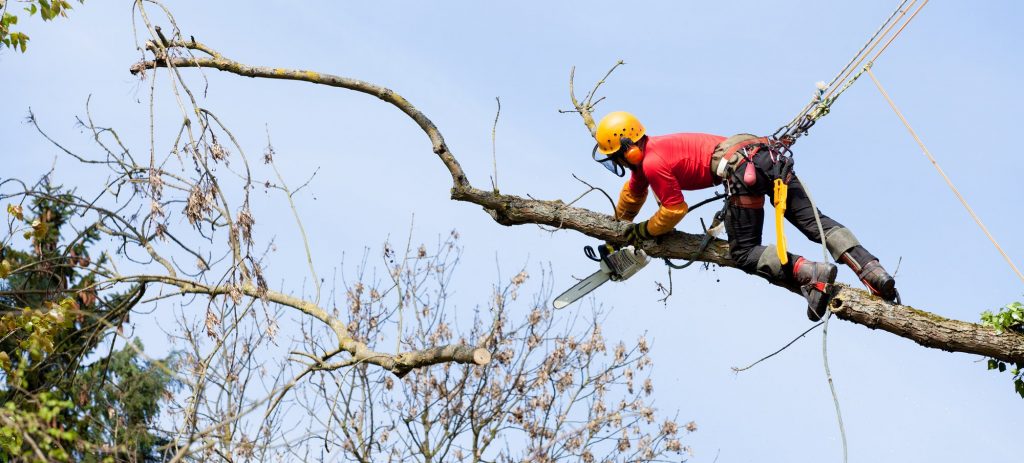
Who is an Arborist?
What Does an Arborist Do?
- Pruning: To remove dead, diseased, or damaged branches and to encourage healthy development, arborists prune trees.
- Fertilization: To provide trees the nutrition they need to grow, arborists employ specific fertilizers and methods.
- Disease & Pest Control: Arborists are skilled in spotting and treating pests and diseases that affect trees, which helps stop the spread of dangerous pathogens.
- Tree removal: In rare circumstances, it may be necessary to get rid of trees because of illness, damage, or safety issues. Arborists have the tools and expertise required to remove trees safely.
- Consultation: To provide recommendations for tree care and management, arborists frequently meet with landowners and landscape designers.
What Qualifications Does an Arborist Have?
Frequently Asked Questions
- What distinguishes an arborist from a tree trimmer?
- What sort of tools does an arborist employ?
- Can I do tree care myself or do I need to hire an arborist?
Conclusion:
The Essential Guide to Arborist Equipment: Everything You Need to Know
Arborists are professionals in tree care who have received training in the upkeep and care of trees. To complete operations like pruning, trimming, removing deadwood, and planting new trees, specific equipment is needed for the job. Technology has advanced, making arborist equipment more effective and user-friendly, which has made the job simpler and safer. This manual will give a thorough rundown of the important tools that every arborist needs to have on hand.
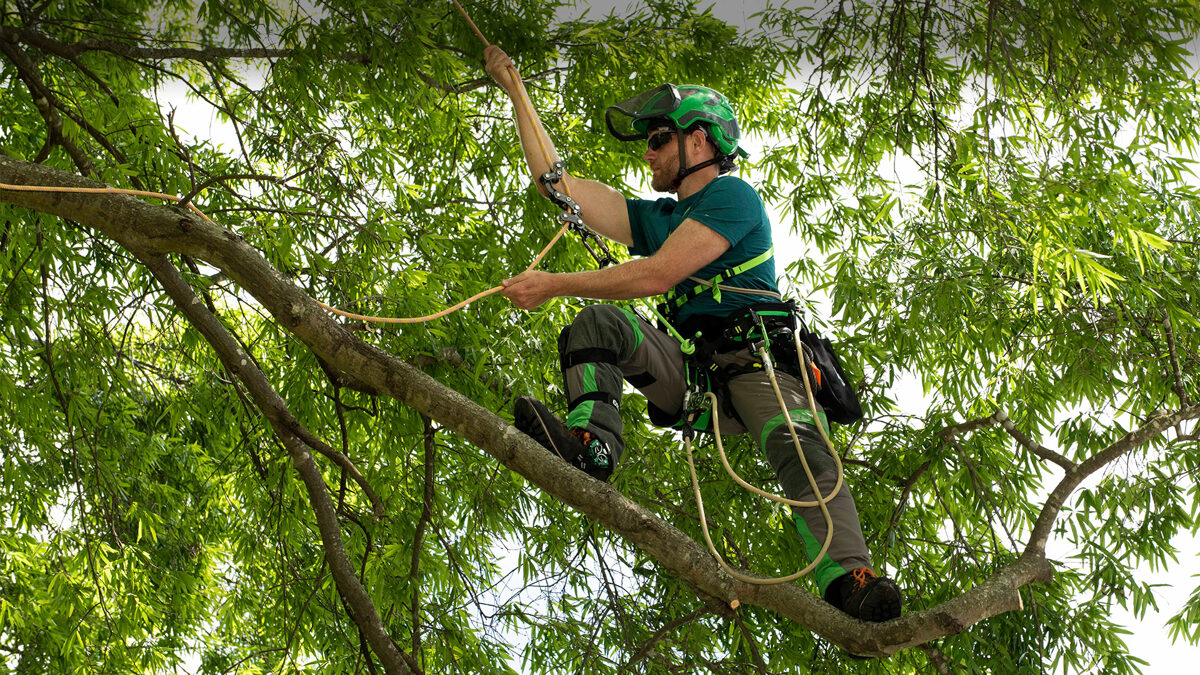
The Right Tools for the Job: Understanding Arborist Equipment
- Saws: Arborists employ a variety of saws, including hand saws, chainsaws, and pole saws. The size of the tree and the sort of cut you must make will determine the best saw for the task.
- Ropes and Harnesses: When working at heights, arborists need ropes and harnesses. They provide workers in trees stability and safety.
- Safety equipment: Arborists place a high focus on safety, therefore it's critical to wear the right clothing, including helmets, safety glasses, and protective gloves.
Choosing the Best Arborist Equipment for Your Needs
- Choosing the Best Arborist Equipment for Your NeedsWhen it comes to choosing the best equipment for your needs, there are several factors to consider, including:
- Quality: Buying high-quality equipment can save you money in the long term since it will work better and last longer.
- Price: While more expensive, excellent equipment is usually worth the extra money because you get what you pay for. Using cheap equipment might put you in danger since it could fail or wear out rapidly.
- Comfort: Because you will be using the equipment for extended periods of time, it is crucial to purchase items that are pleasant to use. Look for equipment that is ergonomically constructed, well-balanced, and lightweight.
- Look for features that encourage safety while selecting equipment, such as non-slip handles, safety switches, and automatic brakes.
FAQs About Arborist Equipment
Conclusion:
How to Become an Arborist: A Comprehensive Guide
Arborists, also known as tree surgeons, are trained professionals who are responsible for the care, maintenance, and removal of trees. Becoming an arborist requires a combination of education, experience, and certification. In this guide, we will explore the steps you need to take to become a qualified arborist.
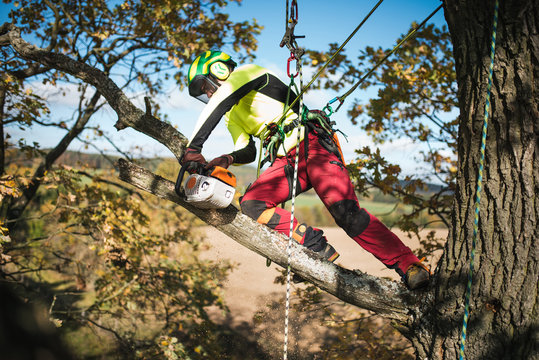
What is an Arborist?
Why Become an Arborist?
Steps to Becoming an Arborist
- Education: Getting a decent education is the first step in becoming an arborist. This may entail enrolling in biology, horticulture, and other relevant courses. Additionally, you may enroll in courses created especially for arborists to gain a better comprehension of the subject.
- Experience is something you'll need after receiving a decent degree. This can be accomplished through volunteer work, internships, or working as an assistant to an accomplished arborist.
- Certification: Once you have both education and experience, you can become certified as an arborist. There are several organizations that offer certification, including the International Society of Arboriculture (ISA) and the Tree Care Industry Association (TCIA). Continued
- Education: Becoming an arborist is a lifelong process, as you will need to continually update your skills and knowledge. This can be done through ongoing education and training opportunities.
Essential Skills for an Arborist
- Physical fitness is a must for arborists because they work outside frequently in inclement weather. To do the work efficiently, one must be in good physical condition.
- Technical expertise: You must have a thorough understanding of tree biology as well as the procedures and equipment involved in caring for trees.
- Arborists frequently interact with clients, thus they need to be able to communicate clearly with them.
- Problem-solving abilities: Dealing with trees can be difficult for a variety of reasons, therefore it's critical to be able to find innovative solutions.
- Pay close attention to the details when working since even minor errors can have major repercussions for arborists.
Conclusion
Understanding the Importance of a Tree Pruning Arborist
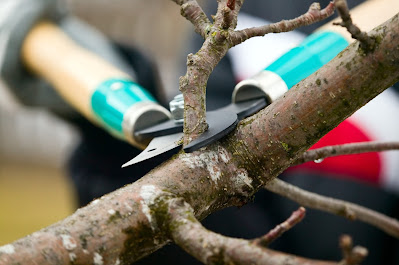
Are you sick of battling with invasive, overgrown trees that shade your yard? Or perhaps you don't know what to do with a tree that is starting to look a little ill. Calling a tree pruning arborist is necessary in any scenario. But what are arborists who specialize in tree pruning and what do they perform?
An expert that focuses on preserving and caring for trees is called an arborist and they prune trees. They have the education, know-how, and tools required to prune and maintain trees in a safe and efficient manner. The advantages of working with a tree trimming arborist will be covered in this article, along with tips for choosing one.
Why Hire a Tree Pruning Arborist
- A tree trimming arborist may help maintain your trees healthy by removing dead or diseased branches, enhancing air flow, and encouraging new growth. This will improve the health and look of your trees. Additionally, they have the ability to shape the tree to enhance its visual appeal.
- Increasing security: Overgrown trees may be dangerous since they can obstruct electricity lines, walkways, and even roads. These risks may be eliminated by a tree trimming arborist, making your home safer.
- Protecting the value of your property: A healthy tree may raise the value of your home, but a sick or overgrown tree might lower it. An arborist who specializes in tree pruning can help maintain the beauty and health of your trees while raising the value of your home.
- Preventing damage to your property: Your home, automobile, or other property may be damaged by dead or falling branches. A tree trimming arborist can get rid of these possible dangers and aid in avoiding property damage.
What to Look for in a Tree Pruning Arborist
- Check for certification from a respected organization, such as the International Society of Arboriculture, when hiring a tree trimming arborist (ISA). This guarantees that they have the education and experience needed to prune trees safely and proficiently.
- To protect yourself in the event of an accident or damage to your property, confirm the tree pruning arborist is covered by insurance.
- Equipment: In order to prune trees safely and effectively, an arborist needs be equipped with a bucket truck, a chainsaw, and safety gear.
- Reputation: To find out what past clients have to say about the tree pruning arborist, ask for references and read internet reviews.
